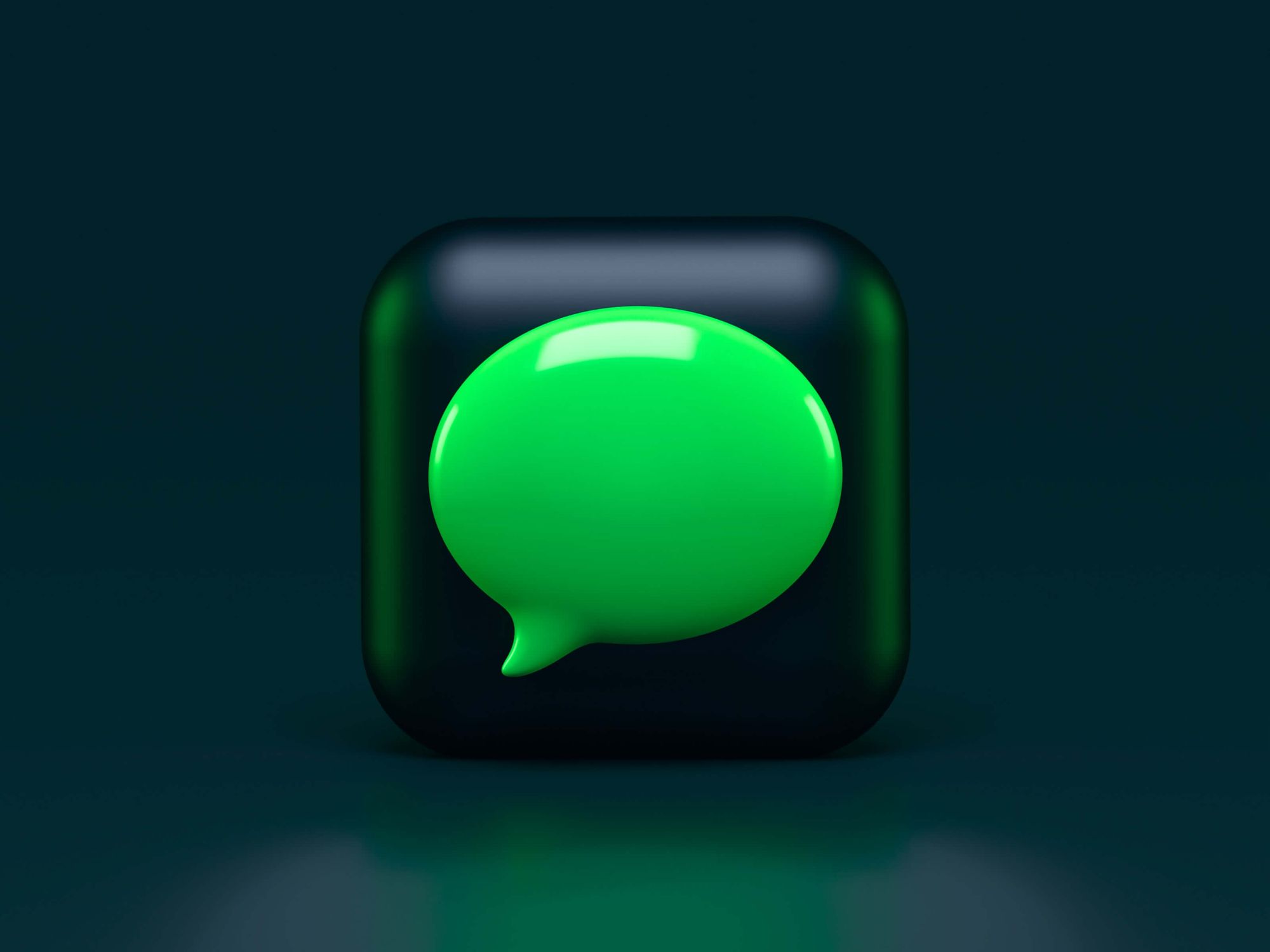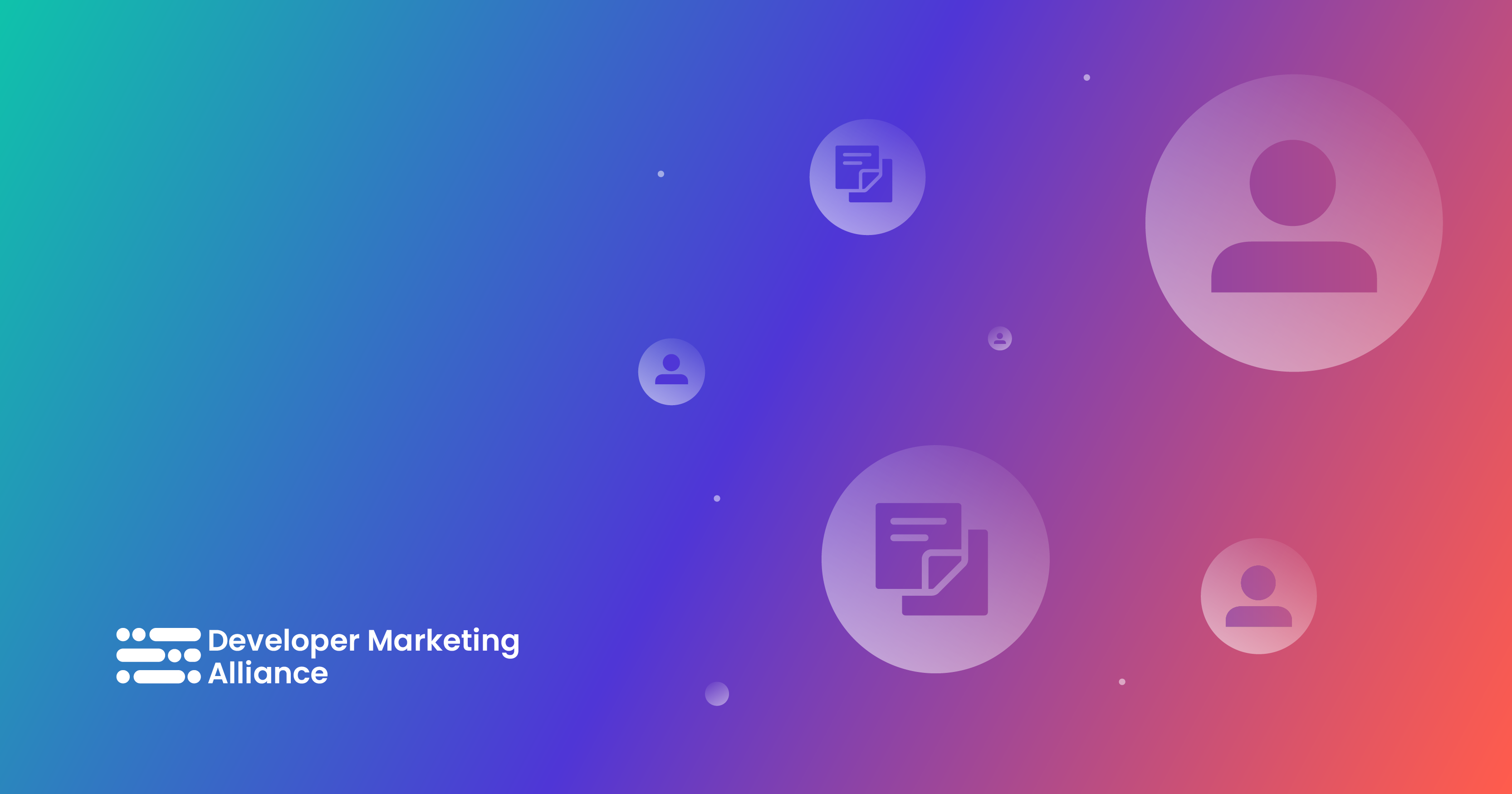At the Developer Marketing Summit in San Francisco, Mike Stowe, Director of Developer Marketing at RingCentral, gave a talk on:
- The top challenges associated with developer programs
- The key components of a successful developer program
- Four ways to create a great story in developer marketing
- Leading with empathy, integrity, and authenticity
- The right way to market to developers
- Understanding different audiences in developer marketing
- The importance of knowing your developers, product, company, and competition
Top challenges associated with developer programs
The first developer program I ever built was at Constant Contact. Constant Contact is not a developer-first company. They sell to small businesses and they wanted me to come in and convince developers to use their API to build integrations for their customers.
Constant Contact was my first ever developer relations/developer marketing job, so I was excited. When I got there I started asking people, “What do you think about Constant Contact?”
The response was, “Yeah, you guys are cool, not as cool as Mailchimp, but you’re top 10, top 20 at least.” So we had a challenge there.

Every developer program is going to be different, and every developer program is going to have different challenges. The challenges I had at Constant Contact were very different from the ones I had at MuleSoft.
A problem I had at MuleSoft was that we had an open-source solution. We moved to the enterprise and that meant we were now charging for all the work that developers had built and contributed. You can imagine how excited they were.
We were also a brand new player in the ESB space, which was dominated by players like TIBCO, Informatica, Microsoft, and Tigera.
I then worked at a stealth startup that nobody had ever heard of, working on Kubernetes and network security, something that was brand new and a lot of developers weren't even thinking about.
Now I’m here at RingCentral and we sell telecommunications. Here, we had to ask, “How do we bring in developers to get them involved for SMB all the way to enterprise? And how can they use RingCentral’s APIs?”
I was super excited about the job at RingCentral, so I put out a tweet to ask my friends what they thought about the company. Now, RingCentral is a public company with 400,000+ customers, and the very first response I got back was, “Who? Are they a startup?”
The second response I got back was, “I love RingCentral. I think I used them 18 years ago to send a fax.” The point here is that as we develop our messaging, it's important to understand where you are in the market and how developers perceive you.

The key components of a successful developer program
I’ve been very lucky in that all of the programs I walked into, I’ve used my incredible marketing skills to sell them on the vision and got a giant budget of $0. But it doesn't matter what your budget is, because at the end of the day, all successful programs have two very basic things.
Number one, you have a great product or service. If you don't have a great product or service, it doesn't really matter what you do. You can make it look as great as you want, but at the end of the day, developers are going to try it, and you're not going to be successful if you don't have a good product.
The second thing you need is a great story. You're not selling a product or a service, you're selling a vision. How does your solution help them? How has it changed their lives? If you think about developers, they’re very pragmatic. So how does it really impact their day-to-day?
Nobody wants to hear, “This product is so amazing. It's going to give 1,000 free days a year.” They want to hear, “This will save you x amount of time by doing this.” Give them the facts and be able to prove them.
The other thing about a great story is that it tells itself. When building a program, I start with determining what story we're going to tell. We can figure out everything else once we have the story.
How many people have bought Netflix or taken an Uber because of an ad they saw?
The incredible thing about developers is that most of the marketing that happens is through social channels. There’s this concept that developers are introverted. The reality is that they're very engaged with each other. They're talking on Stack Overflow, forums, Slack, or even RingCentral.

Netflix’s story wasn't, “Watch movies when you want. Don't worry about late fees.” Airbnb’s wasn't, “Don't get stuck in a hotel and have the comfort of your own home when you're traveling.” Uber’s wasn't, “Take a comfortable ride.” And MoviePass’ wasn't, “Watch a bunch of movies.”
When we talk about having a great product and a great service, all of these companies come to mind. What they sold in their story was the value. And this is where we need to be very focused as developer marketers.
We often think with developers that we need to talk about the features of the product. Features are nice, but what's the vision? What's the value? In the enterprise space, you don't buy a solution. You buy a partner who's going to lead you through to that next step.
If you look at Netflix, it was about time with family and friends. Airbnb was about freedom, and for Uber it was safety and freedom. You have to go find a cab, you have to wait, and you know who your driver is going to be. And MoviePass is again about spending time with people. You can go with your friends to the movies and engage with them.
Your competition is not your competitors. Another mistake we often make is to say, “Okay, who are our competitors in the field? This is who we have to message against to get the developers' attention.”

The reality is that your competition is spending time with their family, going to their kid's ball game, taking time to grow their career, getting that extra work done, or that side gig. It's really important that you bring real value to their lives and you're not competing against the company that you know is your competitor.
You're competing against the things that are claiming their attention every single day.
4 ways to create a great story in developer marketing
Know your audience
If you think about storytelling, it's really hard to tell a story if you’ve got the wrong audience.
I wish I could say I've been a perfect uncle, but when my niece was three I decided to tell her a scary story. I had to spend the next week staying up with her every night explaining why that story was completely false. It wasn’t real, it could never happen, etc. Wrong audience.
Know your product
This is something that sometimes becomes difficult for us because we work with a product and engineering team and they like to get technical really quickly.
The reality is that we need to understand our product, and that means asking some tough questions that we as marketers don't always like asking, like, “What problems does it create?”
When you work with developers, they're going to hone in on every single piece and ask you the hard questions. If you say, “I can do this,” they're going to ask you to prove it. The last thing you want to do with developers is say that you can do something when you can't.
When I was at Constant Contact, I had a potential prospect come up to me and say, “I have a small business. I like that you guys have the APIs and the integrations so I'm thinking about switching to Constant Contact, tell me why I should.”

I said, “OK, what does your business do?”
He replied, “We're a small nonprofit. I send one email a month to 13 board members and today I use Mailchimp. Now, convince me.”
I said, “You should use Mailchimp.” The salesperson next to me didn't really appreciate that answer, and I'm pretty sure I had a lot of explaining to do, except the very next day I received an email from this individual. The email said, ‘I just signed up for Constant Contact. I know it costs me more and Mailchimp is free, but I appreciate the integrity. You're a partner I can trust.”
I would much rather have a developer use our competitor and not have a great experience than use us, have a bad experience, and then choose a competitor.
Know your company
Again, you're not marketing a product or service, you're marketing a vision. That vision needs to align with your greater company. And every company has strengths and weaknesses.
Know your competition
What are your competitors’ strengths? What are their disadvantages? Where can you play in the market? At MuleSoft, we looked at all these solutions and it was very complex to use the ESB. With MuleSoft you could just drop it in, easy-use connectors, and easy to go.
So why should you use Mulesoft? Because you don't have to write code. Now, try telling that to a developer. They’ll question if you’re trying to replace their job. No, you're trying to let them do their job faster so they can focus on the fun aspects and not have to maintain an API every time the owner changes it.
What opportunities are your competitors missing? Where's the market for you? Where’s this vision that no one else is thinking about just yet?

Leading with empathy, integrity, and authenticity
Early on in developer relations/marketing, a survey was conducted that asked what the most important components to be successful in developer marketing were.
The number one answer was empathy. Developers want you to respect and understand their challenges and walk that journey with them. They don't want you to sell them something they can't use or that makes their life harder. They don't want you to try and give them a bunch of fluff that says how great it is.
They want you to understand their problem and provide a solution that actually helps them solve it.
Number two was integrity. Again, I'd rather have our developers have a bad experience somewhere else than come to us and have a bad experience first.
Be honest with them, tell them you can't meet their needs or solutions. That's counter to everything that we do in marketing. If you're a traditional marketer, you're saying, “I need to drive pipe. I need to get leads. I can't be turning people away.” But it's really about being honest and authentic with them.
Everything you do, be yourself. If you're not a developer by nature, don't pretend to be one. People ask me, “Do you have to be technical to be in developer marketing or developer relations?” Absolutely not.
Some of the best community managers I've worked with that talk to our developers every day come from non-technical backgrounds. But they cared about what the developers were working on. They got excited when the developers got excited. They were honest and they were themselves.

The right way to market to developers
If you have to sell a product to developers, you've already lost. And the best example I give is when I was at a developer conference. The developers were walking to the booths and this one guy was there saying, “Let me tell you about our product” to every developer walking by.
At other conferences, people are like, “Okay, I guess I'll listen." But developers will just walk on by. They don't want to be sold to. They have a particular set of skills and they know the value they bring, so they want solutions that are going to help them.
Now, there's this phrase, ‘developers hate marketing.’. That's not actually true. Developers love marketing. They love hearing about the tools that are going to make their jobs easy. What they don't want is in-your-face, aggressive marketing.
They want, “We understand your problem, this is how you can solve it, and we get who you are as a person.”
There's a difference between selling and helping. And for our developer marketing at RingCentral, this is one of the most important principles I put down right at the bat. We're not selling RingCentral, we're helping developers achieve their goals. Selling is, “Let me tell you how great our product is,” or, “We can do xyz better than our competitors.”
Helping is, “We understand you have this problem. We think we might be a valid solution because we can do this. Does this meet your needs?”
Selling means when you can’t do something, you go around the corner and try to avoid that conversation. Helping means being honest and saying, “You know what? I can't do that.”
I'll pick on RingCentral as an example here. We have an incredible frenemy in Twilio. If you come to me and say, “Hey, I want to send $5 worth of SMS a month. Should I use RingCentral?”
“Are you doing voice calls?” No. “Fax?” No. “Team messaging?” No. “Then, you should use Twilio. They have a great solution, but if you need those capabilities, then come back to us.”

Understanding different audiences in developer marketing
You have to know who developers are as people. What are they actually focused on? What are their real-life challenges? What are their hopes and dreams? It's really hard to create a vision if you don't know what they're hoping for.
As a developer marketer, you probably have two audiences. You have an external audience, which may be your developers, and then an internal audience, which are the other people in marketing.
If you have a brand new marketing program for developers and you don't have a paid solution, you’re a cost center. And so there may be questions about what you actually do. What value do you bring to the table? You need to tell the story to them and you need to tell a story to your sales team.
When I started at RingCentral, we didn't have any paid API offerings. That meant I had to go to our sales team and explain to them why this is important and why this helps our customers. I had to help them find the vision.
What it comes down to, regardless of who your audience is, is ROI. If I'm a developer and you say you have this great API, I'm going to try it because I expect it to make my life easier. But if it creates more work for me or it's too expensive, then I'm not going to use it.
It also means understanding who your external audience is. At RingCentral, we have numerous different audiences we have to cater to.

As much as I wish developers could write that million dollar check, it doesn't happen. When I worked at MuleSoft, their solution started at $80,000. Developers aren’t going to buy an $80,000 solution; a CTO or a CIO would make that decision.
The developers are going to implement the solution. And if your developer is the buyer, that's fantastic in having a new direct message to them.
At RingCentral, we also have ISV partners who want to build to connect their system and have apps. Understanding each of these audiences is absolutely critical. And it's also important to understand that each of these audiences thinks and behaves differently.
One of my favorite models is the Insights Discovery model. The concept here is that every person has four different energies, but some energies are more dominant than others, with developers falling into red and blue.
Obviously everyone has their own personality. I'm not saying every developer is going to fall in the blue and red category. When I worked as an engineer and we did this exercise, out of the entire team, I was the only developer that didn’t have blue and red as my leading colors. I had green and red, which meant basically, “Show me you care, and then get out.”
Developers tend to be very cautious and skeptical of your solution because they're used to being sold to. They can be demanding and strong willed at times and say, “I need this to work and I need it to work now.”
If you come from a traditional marketing background, markers typically fall into the green-yellow or yellow-green categories where we have that sunny enthusiasm, caring, and wanting to help people.
Those are two very distinct personalities. So you can imagine why I became a marketer, how that blue-red worked in that green-yellow environment. So again, understand how developers communicate or how your audience communicates.

Know your developers
Keep in mind that your goal here is to create a story that can be tailored to multiple audiences. When you create a great story, it isn't a story that’s going to be exactly the same for every audience, but at the end of the day, the overall vision and goal should be similar.
What do developers like? When I ask this question, I hear all sorts of answers. “Developers like code.” Believe it or not, I know some developers that actually hate code. “Developers love social media.” I have a good friend who works as a developer at a social media company who actually hates social media.
You also hear that developers like meetups. I have plenty of friends who avoid meetups at all costs. So as you think about developers, keep in mind that everything you think is probably not 100% accurate.
What technologies are developers using? What are developers’ challenges? We'll look at the TIBCO index and say, “Oh, they're using Java, PHP, JavaScript. What if they're a machine learning developer? Then they're typically focused on using Python. Or they’re a Kubernetes developer and they're typically working on Go.
When you look at your developer audience, understand the way you need to segment the audience for your needs, because they can be segmented so many different ways. You can look at the programming language, the type, etc.
I'll be honest, we don't segment by most of these at RingCentral. We do look at what their needs are, what their goals are, and what languages they’re using.
Typically, one of the first tasks that we do is create a persona. Personas are very important.
We look to use analyst reports and run community surveys. One of the most common things we do is get a community survey out there to get to know our developers.
You might run a survey and it's hit or miss. You might get 12 responses, and that might be reflective of your community, it might not be. But if you're constantly engaging your developers, every time you see developer on a forum, you reach out and say you’d love to have a 5 minute conversation. Or if they’re local you can offer to buy them a coffee and chat about their experience.

The influencers; who are the developers you've worked with? What are the challenges you've seen? Review existing data if you have an existing portal. And again, ask people in the space, run community surveys, ask your coworkers and develop personas. But let's not develop personas until we understand who the developer audience is.
Your developers are going to be the ones that help you craft this perfect story. The foundation of everything you do with your program is the messaging you create. Without the positioning or the messaging, you don't have a strong marketing value proposition for your developers or your audience.
Know your product
I'm going to give away the secret sauce at RingCentral. This was our exercise we did in 2018, and there's a lot of good things here.
What does your product solve? Allows you to use your trusted business number. You don’t have to get a separate number. You can integrate third party apps and sync data. It's the only all-in-one solution for developers.
Then we had to ask ourselves the hard question, what problems does it create? Well, there's an awareness problem. Most customers don't know about our APIs, therefore they can't use it.
Most customers bought a phone system. They didn't have a vision for how to use the APIs. They're not thinking, “I want a voice API to automate my communications.” Most customers at RingCentral aren’t developers. Developers aren’t familiar with RingCentral’s APIs, which means they have to come in and learn the technology. And our onboarding was too difficult.
These aren’t questions we like to answer. And when I say our onboarding was too difficult, I did a competitive analysis; one competitor took me 15 minutes to build the app, another took me 20 minutes, and with RingCentral it took me 40 hours. That's a problem.
So if I go and market that to developers, I'd be lying to them, we’d lose all credibility and they’d have a bad experience. These are issues that you have to fix.
Also, what is there to do that you’re not thinking about? This is where you can engage your developers and have them tell you how they're using your product. We talked to our customers at RingCentral and they were doing things we never imagined with our APIs. It completely changed the value proposition and the vision of how we're going to market them.

Where can you go in the future? Because you're not telling developers a story of what you can do today. You're saying, “Here's what we do, but here's where we're going.” And if you don't have the future component, you're not selling a vision or a partnership, you're selling a product.
If you look at RingCentral's messaging in 2018, it was revolutionized communications. It was bringing all this together. And what happened was we went from not being seen as a C pass to being seen as a C pass. We went from not being known by developers to being one of the top award winning communications platforms for developers.
Know your company
How is your company positioned in the market? Again, if I look at RingCentral, when we started, it wasn't great, but we had to understand that this was our challenge. At the same time, RingCentral is a leader in cloud communications. They're one of the most well known cloud communications companies. That was our advantage.
How is it positioned with your audience? In other words, what do developers think of us? They originally didn’t think very highly of us at all, so we had to fix that.
What are the current downfalls? Why wouldn't you use your solution? And be honest about it, because developers are going to ask you.
What's the five year roadmap? Where is your company going? It's one thing to say this is the product roadmap, and it's another thing to say that this is our company vision. Again, you're that partner.

Know your competition
What are your competitors’ strengths and disadvantages? Is there an area you can play that creates a new solution for your developers for a problem that they might not even know they have, but is a real pain point?
How are your competitors currently perceived? That's really important because one thing that some companies do, and I'm adamant that we don't do this, is bash their competitors.
Every single one of our competitors does things better than we do at some level. Now I think we have a overall better solution, otherwise I wouldn't be a RingCentral. But every competitor does something well, and we have to recognize that.
What opportunities are your competitors missing? A lot of people like to play where the space is, but where is the space going? That should be critical to your story.
Conclusion
Everything we did at RingCentral started with, how are we perceived? How do we address that? How do we create a great story? And how do we tell that story through every touchpoint we have?
Every single thing we do resonates the story that we created based on what our developers advise us to tell, and everything we do at RingCentral starts with three things: empathy, integrity, and authenticity.





